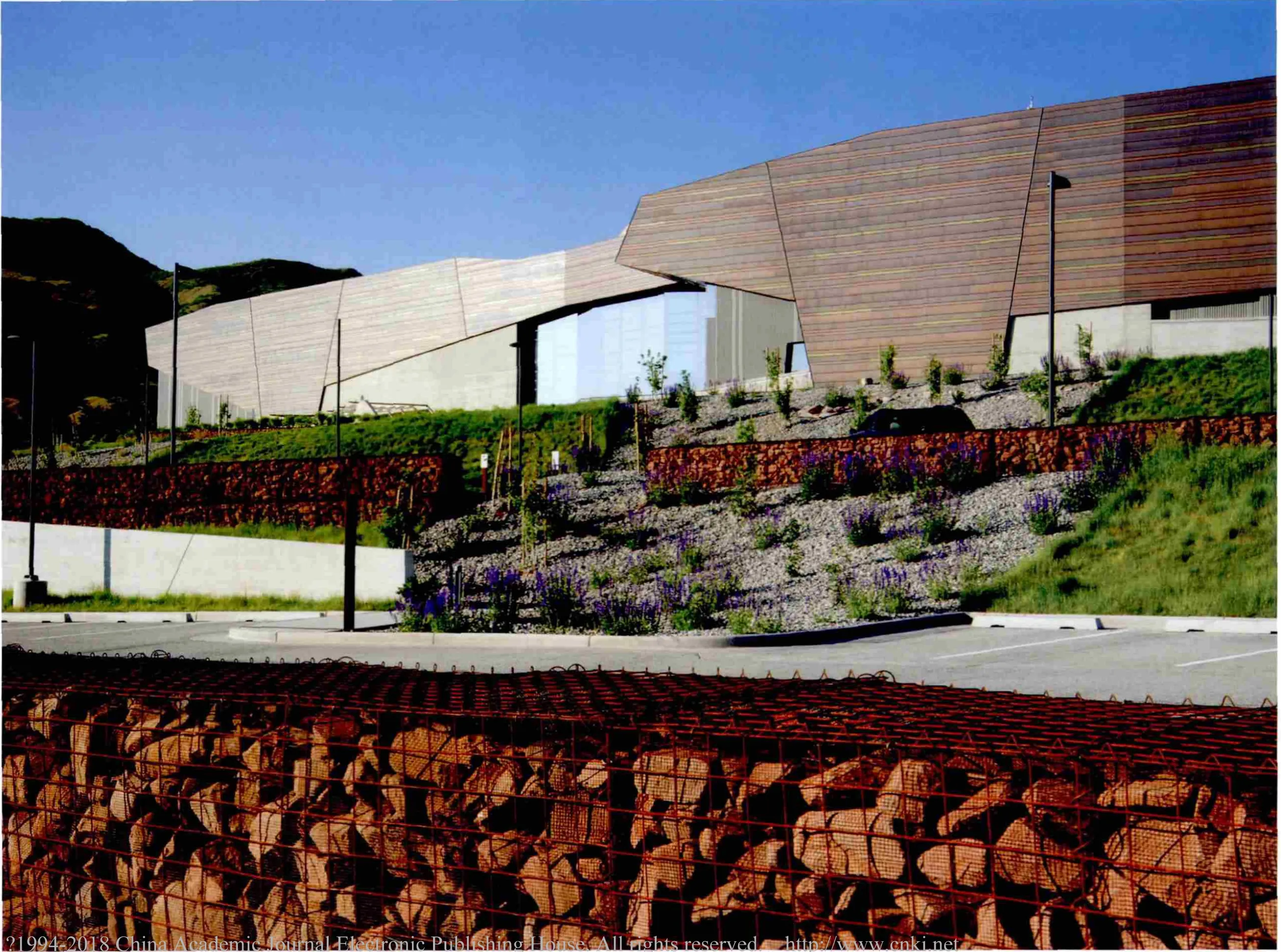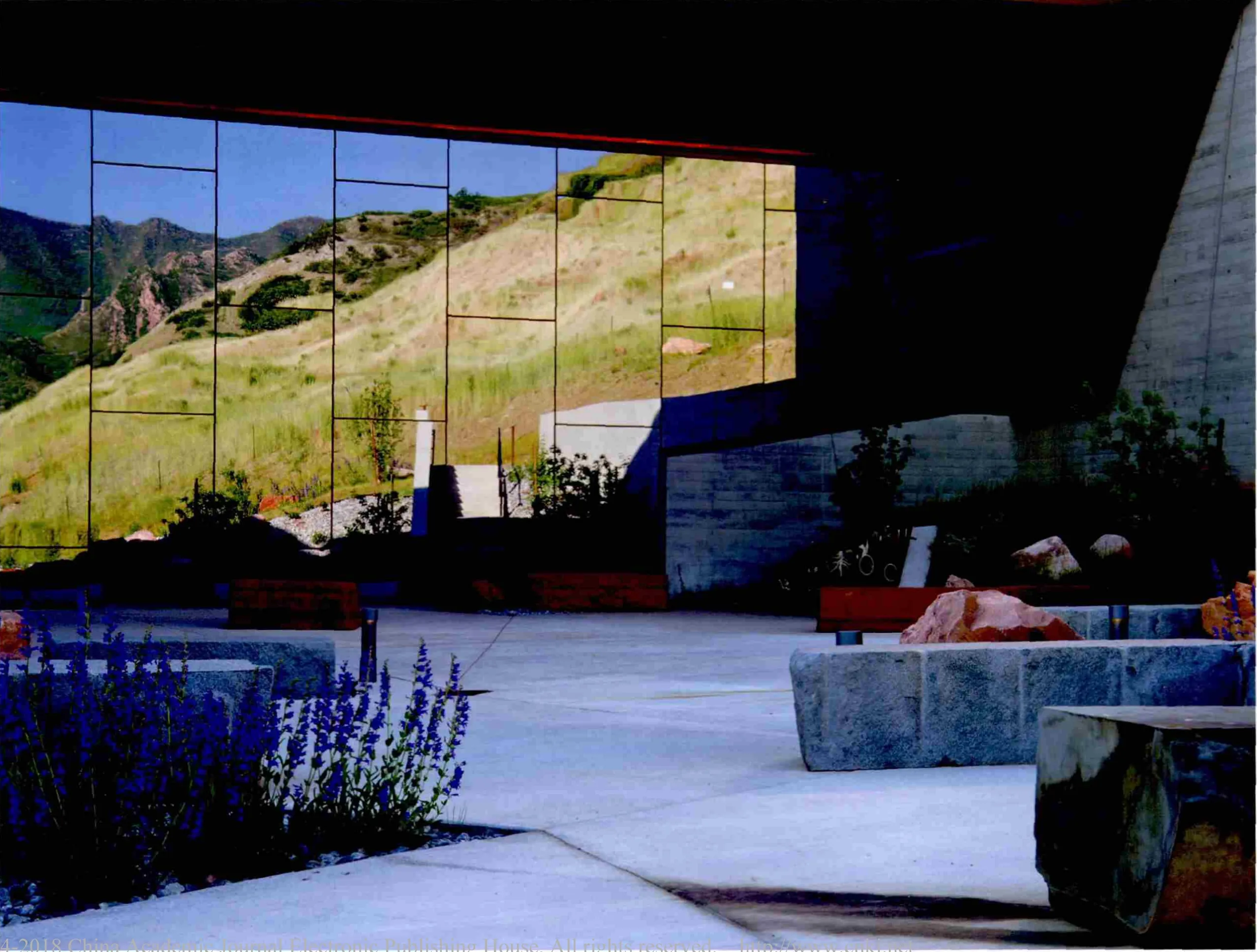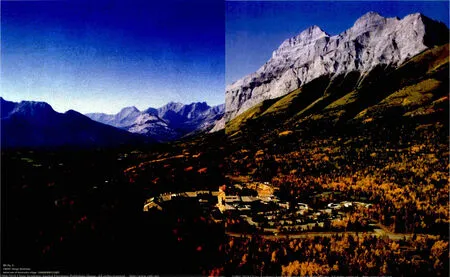有影响力的设计
2013-10-23作者弗里茨斯坦纳
作者:弗里茨・斯坦纳
“预测未来最好的方法是设计未来。”——巴克敏斯特·富勒
设计代表着人类适应变化和创造美好未来的最有力的工具之一。设计既包含构想理想的未来住所和对象的过程,也包含为达到这个未来理想而需要的对其过程的管理。设计师的信息库帮助他们知道怎样做有效、怎样做无效,来指导这个过程。好的城市设计和景观设计需参考以往的设计案例,但是也需要完全了解该特定地区的自然、文化、经济和政治条件。要想将这些复杂的信息成功地结合起来则需要熟练设计师来展现其艺术性的创造。
DesignWorkshop拥有由众多优秀设计师组成的专业团队,因此一直在建筑环境领域引领积极变化、走在行业前沿位置,是设计行业的领袖公司之一。DesignWorkshop起源于学术领域:作为北卡罗来纳州立大学的年轻教授,乔・波特和丹・恩赛因带领学生和同事合力组织了一些集中设计活动来解决实际项目,并且在1969年创办公司时也以这种设计方法为要点。该公司的名称DesignWorkshop则体现了这个带学术性的工作室的合作氛围。在DesignWorkshop创办的时候,当时大多数公司都是以创办人的名字命名的。以设计理念及合作方法命名从一开始就奠定了其实践模式。在成功服务于私人客户和政府部门的同时,DesignWorkshop仍然保持着其学术定位,强调的是理论和度量。他们着眼于分析和图形表达,每一个项目都是从项目主要矛盾陈述和主题陈述开始,明确面临的主要挑战,并提出可能的解决方案。因此,设计团队能够以相同的框架模式着手处理每一个项目,但也能够根据每一个项目的独特情况灵活地作出调整。
虽然不同的项目可以采用共同的框架,但是,每一份设计都必须对其特定的情况作出回应。在这一点上,设计项目类似于科学实验,分析结构可预先计划,但结果未知。
理论上,DesignWorkshop是通过修改和优化可持续发展的三重底线而明确其设计理想。可持续发展的支持者主张在生态利益、经济利益和社会公平这“三大利益”中维持平衡。DesignWorkshop的DWLegacyDesign®设计理念包含“综合性、可持续性的思维方式”,把环境、经济、社区和艺术融为一体。艺术通过五官将我们与周围环境相连。艺术通过人的感官体验把人和环境联系在一起。这些联系对可持续发展至关重要,因为人们只有对某个地方有感情,才更有可能去保护这个地方,并将其世世代代传承下去。美感呈现的是我们的文化价值观,因此对实现社会质量和环境质量是至关重要的。
DesignWorkshop会仔细考量其项目产生的影响。每个项目一开始都会举行一场以探索为导向的会议,在会议期间,设计团队会明确主题及希望达到的结果,然后选择相关的度量指标来实现预期效果。该公司已制定出原创的设计度量指标表,来指导团队明确其可持续发展目标并衡量对环境、经济、社区和艺术产生的影响。除了其自身的度量指标之外,DesignWorkshop还采用美国绿色建筑委员会的“针对邻里发展的能源与环境设计先导”(LEED®ND)及可持续网站倡议TM(SITES™)绩效测量系统。DesignWorkshop在早期就采用了LEED®ND,并作为试点工程来协助开发SITES™。该公司采用这些度量指标的目的是确保其团队尽可能全面地、整体地考虑到其项目产生的影响。度量指标有助于指导设计师从整合、创新和试验的角度提出问题。此外,该公司衡量这些影响的目的是评估成败、了解产生的价值并帮助完善未来的设计。对项目产生的影响进行衡量,这对建筑及景观建筑的循证设计发展体系至关重要。
跟其学术界同仁一样,DesignWorkshop也力求扩展其景观建筑、城市设计和城镇规划方面的知识。DesignWorkshop的员工是反思型实践者,他们通过仔细、公开的评估他们的项目而增加专业方面的知识。作为一个执业事务所,他们当然必须关注其业务的可持续性,但他们也力求提升其专业知识。最好的设计师能够边学边做,从而通过反思修改其实践。对自己的工作进行诚恳的分析需要的是自律和虚心。
我很幸运能够认识DesignWorkshop的大部分领导。他们无一例外地通过服务于景观建筑基金会、美国景观建筑协会(ASLA)专业人士及学生评委会、《景观建筑杂志》编辑部、ASLACEO圆桌会议、文化景观基金会、美国规划协会分部以及其他许多专业组织而获得专业上的提升。值得注目的是,他们对历史有着敏锐的触觉。他们既从自己以往工作中的先例学习,也在前辈奥姆斯特德(主要在美国创办了景观建筑和规划专业)和伊恩・麦克哈格(创建了一套基于生态学的新型设计和规划理论)确定的领域范围内上下求索。
DesignWorkshop的专业人士是其同龄人的良师益友和热心支持者。他们在DesignWorkshop内部以及世界各地的大学传播知识和技能。例如,DesignWorkshop有一项称之为“设计你自己”的公司内部员工学习机制。几乎每个星期他们都会召开“午餐及学习”研讨会,是由公司内部的专家员工主持,来反思与讨论自己的一些经历与所得。此外,他们还特邀外部专家参加“午餐及学习”研讨会,着眼于当下论题。DesignWorkshop的六个办事处(美国阿斯彭和丹佛、科罗拉多;奥斯丁、德克萨斯州;阿什维尔、北卡罗来纳州;塔霍湖、内华达州;盐湖城、犹他州)通过网络、音频和视频会议相联系,这样可以使不同办事处的设计师能够在一起学习和分享知识,从而强调他们是“一个带有长廊的办事处”,而不是六个办事处。
在外部,DesignWorkshop创建了一项驻院老师计划,从而强化其学术联系,并与“设计周”的各大院校通力合作,培养学生、实践者和教授之间的相互交流。实质上,这些“设计周”有助于复兴并延伸丹・恩赛因和乔・波特在20世纪60年代创建的模式。他们举办协作型研讨会的目的是使学生接触到实践者的方法和思路。
将一个人的工作写下来恐怕是最单纯的反思形式。在DesignWorkshop,这样的作品——这样的反思——尤为棘手,因为参与写作的不只一人。与集体设计一样(所有好设计都是集体的,即使是挂在“明星建筑师”的名字下的设计),集体作品需要付出、接受和让步。这并不意味着设计写作无法传达强有力的观点。在过去10年里,该公司已出版了四部作品:《美国西部的新园林》(2003年)、《设计走向完美》(2007年)、《精品花园》(2010年)和《品质恒久的景观》(2013年)。通过出版著作,DesignWorkshop不仅表达了其自身的理念,而且有助于专业探索,并允许大家对其项目进行批判与检验。DesignWorkshop当然是行胜于言。不久前,我和托德・约翰逊(DesignWorkshop的首席设计官)一起为《景观建筑杂志》写了几篇文章。这要求我们彼此之间相互合作,但更重要的是其中也涉及到与以下知名设计师(和知名人士)的合作:劳里・奥林、鲍勃・汉纳、凯罗尔・富兰克林、莱斯利・萨奥尔、科林・富兰克林、罗尔夫・萨奥尔、乔安妮・杰克逊和塞西莉・基恩,我们也对其作品进行了概要分析。我们试图将托德・哈佛设计研究院的观点与汉纳・奥林、安德罗伯根、杰克逊・基恩以及我自己融汇受麦克哈格影响的宾夕法尼亚大学生态观结合在一起。哈佛研究院与宾夕法尼亚大学之间关于设计理念的学术竞争类似于中国高等院校之间的竞争,如:清华大学与北京大学。我和托德的工作尝试略显大胆,但最终是令人愉悦并有所收获的。我们通过对特定项目的审视,力求了解人类应用生态学知识产生的效果。我们也想了解生态学知识在已实现的设计中是否明显。那么,设计范围内的生态学知识仅仅是设计师带进工作室的那些自己早已获得的经验和知识还是在项目背景下的研究成果呢?此外,我和托德对设计师对其工作的反思深感好奇。我们的书写过程也是托德及其他DesignWorkshop同事每日的工作情况的一个缩影。他们无所畏惧,大胆尝试,也能够享受其带来的快乐和成功。DesignWorkshop致力于设计知识的提升,正如我和托德为《景观建筑杂志》写文章所倡导的一样。
虽然他们的工作相当大胆——对德州人深爱的德克萨斯州蓝洞的游泳场所进行改造、在新墨西哥的创建一个崭新社区兰乔维埃罗、利用河滨公园为丹佛市建造一个新的中心——但是,这些DesignWorkshop的项目都非常适当的融入到其所在的景观环境。这些项目不融入景观,又改造景观。这些项目既融入景观,又塑造景观。这些作品的氛围是为当地居民而创建的,而不仅仅是为了设计师而创建。
犹他州自然历史博物馆最近的一个深受大家喜爱的项目,虽然该项目并没有在接下来的一系列文章中提到。该博物馆是与Ennead建筑师事务所共同创建的,表现出对犹他州的自然历史和文化历史的深刻理解。这种理解凸显了DesignWorkshop对合作和研究的承诺。Ennead与DesignWorkshop在这一项目的合作,阐明了学院式研究的价值以及严谨的研究无需局限于高等院校这一事实。我仅仅在照片中见过犹他州自然历史博物馆,这些照片令人赞叹,体现出建筑与景观随季节变化的总体效果。该博物馆立即成为明星建筑,尽管建筑体量庞大,该博物馆还是融入到了古老的湖阶地,为周边自然景色增添了庄严的色彩。(请见图1、图2)
在书写关于DesignWorkshop的过程中,我无疑是迷上了他们的作品,且沉迷了一段时间。麦克哈格生态学分析普遍存在于景观建筑与规划教育中,当然,中国也是如此,其在景观建筑学位课程、研究院中的实践机会大幅度增加。乔・波特、丹・恩赛因、迪克・威尔金森和文斯・福特的作品及其对麦克哈格分析法的优化把景观分析提升为一种艺术。他们对地质学、水文学及动植物生态学的描绘,可与麦克哈格及其图解天才伙伴纳伦德拉・詹尼加的图示与解析相媲美。尽管地理信息系统(GIS)技术大幅度增强了我们的分析能力,但是没有几个GIS绘图可与早期DesignWorkshop或具有代表性才华的麦克哈格-詹尼加的绘图相提并论。(请见图3、图4、图5)
目前,在库尔特・卡伯特森、理查德・萧、特勒尔・巴奇、杰夫・齐默尔曼、吉姆・麦克雷、丽贝卡・伦纳德、史蒂文・斯皮尔斯和托德・约翰逊的领导下,DesignWorkshop继续创新、继续领先。当我帮助启动奥斯汀德克萨斯州大学景观建筑系时,许多实践者都给予了支持。卡伯特森和约翰逊(及其两名年轻同事)也在也在旁极力助威,并帮助教导我们第一个班级,要知道我们当时并没有一个景观建筑教授或讲师。DesignWorkshop这样做实际上是无偿的(这是我这名学术管理人员尤为感激的事情)。这种贡献再次彰显了DesignWorkshop对教学和研究的使命感,也体现了DesignWorkshop帮助培养下一代设计与规划专业人士的愿望。
DesignWorkshop一直在超越——超越期望,超越平凡。他们承接复杂、具有挑战性的、涉及多学科的项目,扩展了公司的视野和影响范围。例如,他们承接了难度较大的经济社会课题,而其他许多景观建筑师对这些课题是退避三舍的。他们触及复杂的场所并综合探讨该场所的环境、经济、社会和审美特质。全球有一半以上的人口都居住在城市,因此,DesignWorkshop的工作相关性变得越来越有意义。这种相关性在中国尤为重要。无论是在城市化方面还是在城市化带来的挑战方面,中国都居于世界领先地位。DesignWorkshop对场所和机构影响与改造,使我们的生活变得更美好。
弗雷德里克(弗里茨)・斯坦纳是一名景观建筑教育家和规划师,自2001年起一直担任奥斯汀德克萨斯州大学建筑学院院长一职。自1997年以来,他在美国五所大学均担任过景观建筑和规划教师一职。斯坦纳是荷兰瓦赫宁根大学的富布莱特学者、罗马美国学院的罗马奖学金获得者以及北京清华大学的客座教授。他获得了费城宾夕法尼亚州立大学的哲学博士学位、文学硕士学位和区域规划硕士学位以及俄亥俄州辛辛那提大学的科学设计学士学位。

图1 (fig.1)CREDIT:D.A.Horchner/DesignWorkshopTheUtahMuseumofNaturalHistorybuildingreachesoutintoitsnaturalsettingandblendswiththenaturalterracesofthesite.在自然环境中的犹他州自然历史博物馆大楼,与场地的自然湖阶地融为一体。
“The best way to predict the future is to design it.” - Buckminster Fuller
Design represents one of our species’ most powerful tools for adapting to change and shaping preferred futures. Design involves both the process of conceiving ideal future places and objects as well as managing toward successful results of that effort. Designers guide the process with a storehouse of information about what has worked and what has not. Good urban and landscape designs build on precedents,but also demand a thorough understanding of natural, cultural, economic and political conditions of specific places. The successful combination of such complex information requires the art of skilled designers.
Largely because of its dedicated team of talented designers, Design W orkshop represents a practice on the forefront of realizing positive changes in the built environment, and, over four decades, this firm has maintained design leadership.The origins of Design W orkshop are in the academy: as young professors at North Carolina State University, Joe Porter and Don Ensign organized design workshops with their students and colleagues to tackle real projects, and they adopted this approach when they established the firm in 1969. The firm’s name– Design W orkshop – reflects the collaborative atmosphere of the academic studio. At the time Design W orkshop was established, most practices were named after the founding principals. Naming a firm after a philosophy and collaborative approach shaped the practice from the outset. While successfully serving private and public clients, Design W orkshop’s approach retains an academic orientation with an emphasis on theory and on measurement. They emphasize analysis and diagramming, starting each project with dilemma and thesis statements that define the main challenges and posit possible solutions. This enables the design team to approach each project with the same framework, but with the flexibility to adjust to the unique circumstances of each project.
While projects can share a common framework, each design undertaking responds to a specific set of circumstances. In this regard, design projects resemble scientific experiments with premeditated analytical structures but with unknown results.
Theoretically, Design Workshop defines its legacy through a modification and refinement of the triple bottom line of sustainability. Proponents of sustainable development advocate a balance of ecological, economic, and equity interests –the “three e’s.” Design Workshop’s DW Legacy Design® philosophy involves a“comprehensive sustainable approach” which merges environmental, economic,community, and artistic concerns. Art connects us to our surroundings through the five senses. Art and aesthetics link people to our environments at a visceral level.Such connections are vital for sustainability because when people are attached emotionally to a place, they are more likely to protect it and pass it on to future generations. Aesthetics present a portrait of our cultural values and, thus, are crucial to achieve social and environmental quality.

图2 (fig.2)CREDIT:D.A.Horchner/DesignWorkshopVisitorstotheUtahMuseumofNaturalHistorycandirectlyexperiencetheregion’secology,geology,wildlifeandothernaturalprocesses.犹他州自然历史博物馆的参观者可以直接体验到该地区的生态、地质情况、野生物种以及其他自然状态。
Design Workshop carefully considers the consequences of its projects. Every project begins with a discovery-oriented session during which the design team defines a thesis and desired outcomes, and then selects pertinent metrics employed to achieve the desired results. The firm has developed its own metrics menu sheets to guide teams in defining sustainable objectives and measuring environmental, economic, community and artistic outcomes. In addition to its own metrics, Design Workshop employs the U.S. Green Building Council’s Leadership for Energy and Environmental Design for Neighborhood Development (LEED®ND)and the Sustainable Sites Initiative™ (SITES™)performance measurement systems. Design Workshop was an early adopter of LEED®ND and helped develop SITES™ as a participant in its pilot program. The firm uses these metrics to ensure that its teams are considering the impact of their projects as comprehensively and holistically as possible. The metrics help guide the designers to pose questions about integration, innovation, and experimentation. Furthermore, the firm measures outcomes to assess success, to understand value generated, and to help improve future designs. Measurement is central to the growing body of evidence-based design in architecture and landscape architecture.
Like their academic counterparts, Design W orkshop seeks to advance knowledge in landscape architecture, urban design, and town planning. Its staff are reflective practitioners who advance knowledge in the profession through careful and open assessments of their projects. As practitioners in private practice, they certainly must be concerned with sustaining their business, but they also seek to elevate their professions. The best designers are able to learn on the job and modify their practice accordingly through reflection. The honest analysis of one’s own work requires discipline and an open mind.
I have had the good fortune to know most of Design W orkshop’s leaders.They have uniformly been involved in advancing their profession through such service on the Landscape Architecture Foundation board, American Society of Landscape Architecture (ASLA)professional and student award juries, Landscape Architecture Magazine’s editorial board, the ASLA CEO Roundtable, the Cultural Landscape Foundation, the American Planning Association Divisions, and many other professional organizations. Significantly, they are keenly aware of history:of using precedent in their work and of placing their own endeavors within the arc established by the Olmsteds (who largely created the landscape architecture and planning professions in the United States)and Ian McHarg (who created a new theory for design and planning grounded in ecology).
Design Workshop’s professionals serve as informed critics and enthusiastic supporters of their contemporaries. They mentor and teach within Design Workshop and beyond at universities around the world. For instance, Design W orkshop has a robust internal program called “Design U.” Almost weekly, “Lunch and Learn”seminars convene and are led by internal staf f experts, who reflect on their experience. In addition, they host guest experts for “Lunch and Learn” seminars to focus on timely topics. The six Design W orkshop offices (Aspen and Denver,Colorado; Austin, Texas; Asheville, North Carolina; Lake Tahoe, Nevada; Salt Lake City, Utah)are connected via web, audio, and video conference so that the designers can learn together and share knowledge, reinforcing that they are “one office with long hallways.”
Externally, Design Workshop created a Faculty-in-Residence program to reinforce their academic connections and partner with universities in “Design W eeks” to foster interactions among students, practitioners, and professors. In essence, these Design Weeks help revive and extend the model created by Ensign and Porter in the 1960s. They conduct collaborative workshops to expose students to the approach and thinking of practitioners.
Writing about one’s work, perhaps, is the purest form of reflection. In Design Workshop, such writing – such reflection – is especially tricky because there is more than a sole author at work. Collective writing, like collective design (and all good design is collective, even that under the imprint of a “starchitect”)requires give and take and compromise. This does not mean that design writing cannot have a strong voice. The firm has published four books in the past decade: Gardens of the New American West (2003), Toward Legacy (2007), Garden Legacy (2010)and Landscapes of Enduring Quality (2013). Through publication, Design Workshop not only expresses its own ideas but also contributes to professional discoveries and allows for the critique and examination of its projects.
Design Workshop certainly speaks demonstratively. Some time ago, Todd Johnson(Design Workshop’s Chief Design Of ficer)and I wrote a couple of articles togetherfor Landscape Architecture Magazine. This required cooperation with each other,but, moreover, involved collaboration with strong designers (and personalities)whose work we were profiling: Laurie Olin, Bob Hanna, Carol Franklin, Leslie Sauer, Colin Franklin, Rolf Sauer, Joanne Jackson, and Cecily Kihn. W e attempted to marry Todd’s Harvard Graduate School of Design perspective with Hanna-Olin,Andropogon, Jackson-Kihn, and my own McHarg-infused University of Pennsylvania ecological view. The academic rivalries about design philosophy between Harvard and Penn are similar to those of schools in China, for instance, between Tsinghua and Peking Universities. My undertaking with Todd was a somewhat audacious endeavor but ultimately an enjoyable and rewarding one. W e sought to understand the human-use consequences of the application of ecological knowledge through an examination of specific projects. W e also wanted to question if ecological knowledge was apparent in the realized design. So, is ecological knowledge within design a product of research within the context of the project or just the experience and training (the tacit knowledge)that the designer brings with them into the studio?Furthermore, Todd and I were curious about the designers’ reflections on their work.Our writing process is emblematic of the tasks Todd and his other Design Workshop colleagues take on daily. They do not fear the audacious and they embrace fun and success. Design Workshop is committed to advancing design knowledge, as Todd and I did with our Landscape Architecture Magazine articles.

图3 (fig.3)CREDIT:DesignWorkshopDesign Workshop’s broad environmental analysis of the Kananaskis Valley yielded a series of maps that determined the location and design of a central village.DesignWorkshop对卡纳纳斯基斯峡谷广泛的环境分析产生了一系列的详细规划图,确定了一个中心村庄的位置和设计。
While there is considerable boldness in their work – the transformation of a beloved Texas swimming spot at Blue Hole, the creation of a new community with Rancho Viejo in New Mexico, the implementation of a new heart for Denver with Riverfront Park – there is a wonderful sense that these Design W orkshop projects fit into the landscape where they are located. They suit the landscape and transform it. These works also feel like they were produced for the people who live there, rather than the designers who guided their creation.
A favorite recent project that is not featured in the series of articles that follow is the Utah Museum of Natural History. Produced with Ennead Architects, the museum reveals a deep understanding of the natural and cultural histories of Utah. This understanding underscores Design W orkshop’s commitment to collaboration and to research. Ennead and Design W orkshop’s collaboration on this project illustrates both the value of academic-like research and the fact that rigorous study need not be confined with universities. I have only seen the Utah Museum of Natural History in photographs, and they are dazzling images that depict a seasonally changing ensemble of building and landscape. The museum is at once stunning architecture,but, despite its considerable mass, blends into the ancient lake terrace adding considerable grandeur to its natural context. (see fig. 1 and fig. 2)
Writing about Design W orkshop, I am clearly a fan of their work and have been one for some time. McHargian ecological analysis has become ubiquitous in landscape architecture and planning education and certainly in China, which has experienced a dramatic increase in landscape architecture degree programs,institutes, and practices. The works of Porter, Ensign, Dick Wilkinson, and V ince Foote and their refinements of McHargian analysis have elevated landscape analysis to a fine art. Their maps of geology, hydrology, and plant and animal ecology rivaled the beauty in graphic representation and interpretive clarity of McHarg and his graphic genius partner, Narendra Juneja. While geographic information systems (GIS)technology has done much to advance our analytic abilities, few GIS maps match those of early Design W orkshop or McHarg-Juneja in representational brilliance. (see fig. 3, fig. 4 and fig. 5)
Today led by Kurt Culbertson, Richard Shaw, Terrall Budge, Jeffrey Zimmerman, Jim MacRae, Rebecca Leonard, Steven Spears and Todd Johnson, Design W orkshop continues to innovate and to lead. When I helped start a new graduate landscape architecture program at the University of Texas at Austin, many practitioners were supportive. Culbertson and Johnson (with two of their junior colleagues)went beyond cheerleading from the sidelines and helped teach our first class, as we had started a program without a permanent landscape architecture faculty. Design Workshop did so practically pro bono (something especially appreciated by this academic administrator). This contribution again illustrates Design W orkshop’s commitment to teaching and research and its desire to help produce the next generation of design and planning professionals.
Design Workshop consistently goes beyond – beyond what is expected and beyond the ordinary. They take on complex, challenging multi-disciplinary projects that expand the firm’s reach. For instance, they take on dif ficult economic and social issues that many other landscape architects shy away from. They embrace the complexities of places, that is, their comprehensive environmental, economic,social, and aesthetic qualities. With over half the global population now living in urban settings, the relevance of Design W orkshop’s work grows increasingly more significant. This relevance is especially important in China, a world leader in urbanization and its challenges. Design Workshop transforms places and institutions that change lives for the better.
About the author
Frederick (Fritz)Steiner is a landscape architecture educator and planner and has served as dean of the School of Architecture at the University of Texas at Austin since 2001. Since 1977, he has served on the landscape architecture and planning faculties at five United States universities. Steiner was a Fulbright scholar at Wageningen University, the Netherlands; a Rome Prize Fellow at the American Academy in Rome; and a visiting professor at Tsinghua University, Beijing. He received a Ph.D., an M.A., and a Master of Regional Planning from the University of Pennsylvania in Philadelphia, as well as a Master of Community Planning and a Bachelor of
Science in Design degree from the University of Cincinnati in Ohio.

图4 (fig.4)CREDIT:DesignWorkshopKananaskisVillageMasterPlan卡纳纳斯基斯村总体规划图

